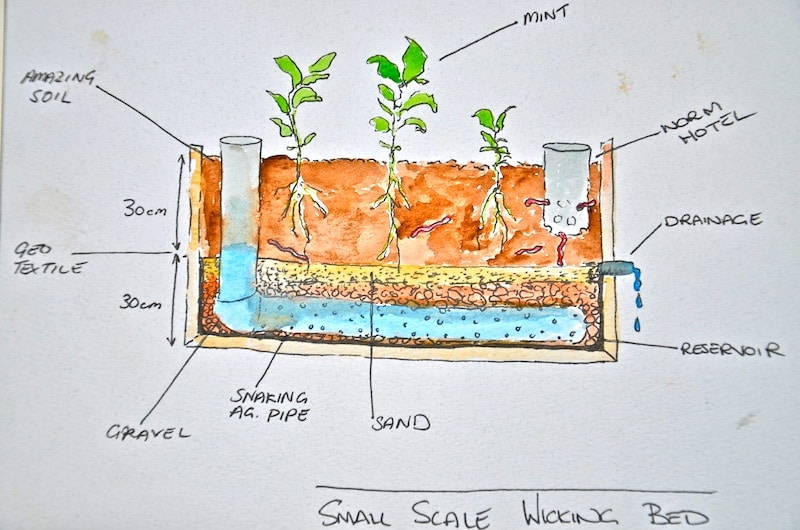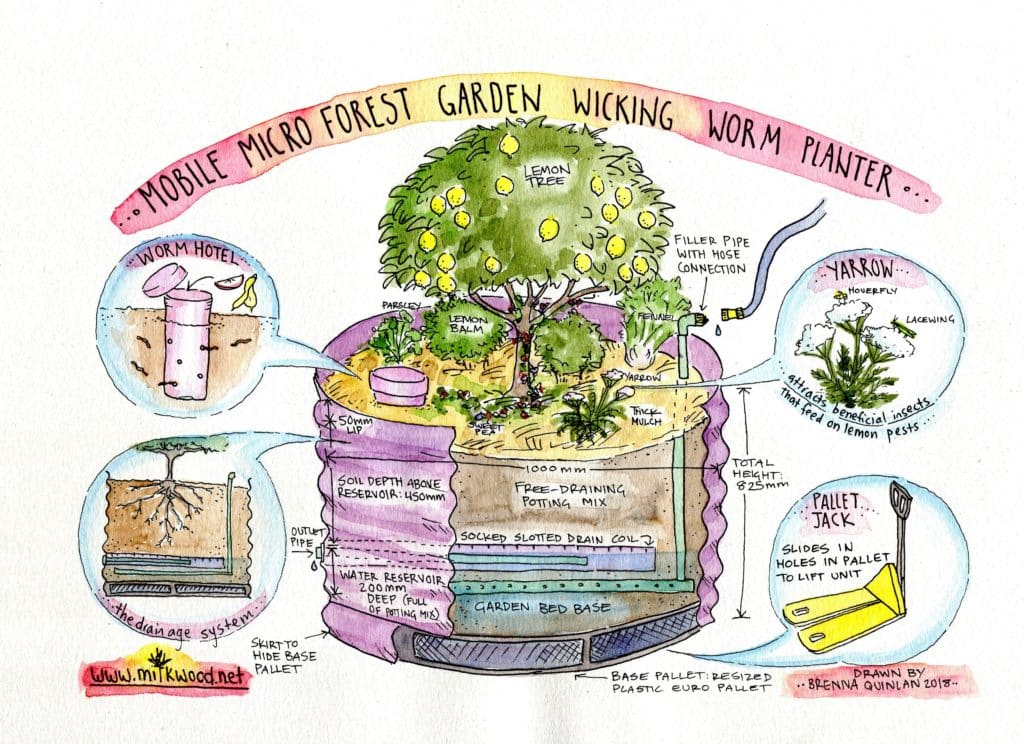I have been playing around with wicking beds this year. In all honesty it isn't going well. YouTubers make it look so simple, and maybe it is, but not for me. I have 3 types. The one that is working the best is the closed system. The two that have the water exposed to the air loose an amazing amount of water each day. It seems to be an
art because to much water and the soil is to wet, and the plants are drowning. To little water and you have to water the same as all the other plants. My closed system is the largest pot for the plants. It also has an area to
feed composting worms, with a handful of my red wigglers. I live in N. California. I think the pots and containers on all systems get to hot. I'm not sure how well the worms are doing. The soil feels quite warm. Even the closed system requires me do add water every other day.
For the tree I like the bucket I idea, but at that point I don't think it's a wicking bed, but a large play on an ollas. I wonder if you added maybe 3 buckets and made a layer of shredded
cardboard, cotton, peat or coco coir. When the water is added to the bucket, there is something to wick it up and hold it until the tree/plants need the water??? It might be fun to give it a try.
I have had a hard time getting trees to survive in the past. My fault I don't water often
enough or consistently. The last few years I have found a method that is working for me. I did a bit larger hole then I need both diameter and deep. I shape the hole in a star shape * (I have clay soil and want to encourage roots to grow out, and not get
root bound) I fill the bottom of the hole with piece of fire
wood. Add soil, then wood chips, then soil. Then I add compostable stuff,
native soil, finished
compost, in no particular order. I put the tree in and finish with the best soil, or compost I have. Topping off with wood chips, close but not touching the trunk. This has worked for me when other methods didn't. I think it's mostly the wood and wood chips holding onto the water, mulch helping with evaporation, and the organic matter feeding the tree, so I don't have to worry about it.
I think adding the bucket and wicking matter might take this method even farther. Maybe from surviving to thriving. I'm going to have to give it a try
Good luck I hope you find a system that works for you, then share with the rest of us who struggle to grow trees.






 2
2







 1
1




 3
3




 3
3




 3
3




 1
1




 2
2








